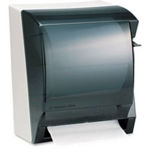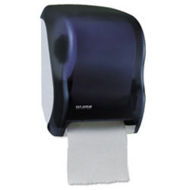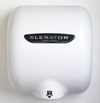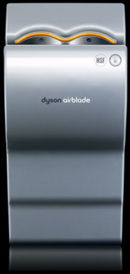Paper towel dispenser redesign
From DDL Wiki
(→Market Research and Observations) |
(→Market Research and Observations) |
||
| Line 19: | Line 19: | ||
{| class="wikitable" border="1" | {| class="wikitable" border="1" | ||
|- | |- | ||
| - | ! No. of user !! | + | ! No. of user !! Use !! No. of paper!! One hand pull !! Paper ready !! Turn knob !! Malfunction |
|- | |- | ||
! 1 | ! 1 | ||
| Line 105: | Line 105: | ||
{| class="wikitable" border="1" | {| class="wikitable" border="1" | ||
|- | |- | ||
| - | ! No. of user !! | + | ! No. of user !! Use !! No. of paper!! One hand pull !! Paper ready !! Turn knob !! Malfunction |
|- | |- | ||
! 1 | ! 1 | ||
| Line 191: | Line 191: | ||
{| class="wikitable" border="1" | {| class="wikitable" border="1" | ||
|- | |- | ||
| - | ! No. of user !! | + | ! No. of user !! Use !! No. of paper!! One hand pull !! Paper ready !! Turn knob !! Malfunction |
|- | |- | ||
! 1 | ! 1 | ||
| Line 273: | Line 273: | ||
{| class="wikitable" border="1" | {| class="wikitable" border="1" | ||
|- | |- | ||
| - | ! No. of user !! | + | ! No. of user !! Use !! No. of paper!! One hand pull !! Paper ready !! Turn knob !! Malfunction |
|- | |- | ||
! 1 | ! 1 | ||
Revision as of 14:52, 6 October 2009
Contents |
Executive Summary
Market Research and Observations
Interview
This is where usability study goes.
Survey
Observations
1. Doherty Hall
- Data
| No. of user | Use | No. of paper | One hand pull | Paper ready | Turn knob | Malfunction |
|---|---|---|---|---|---|---|
| 1 | - | - | - | - | - | - |
| 2 | - | - | - | - | - | - |
| 3 | - | - | - | - | - | - |
| 4 | - | - | - | - | - | - |
| 5 | - | - | - | - | - | - |
| 6 | - | - | - | - | - | - |
| 7 | - | - | - | - | - | - |
| 8 | - | - | - | - | - | - |
| 9 | - | - | - | - | - | - |
| 10 | - | - | - | - | - | - |
| 11 | - | - | - | - | - | - |
| 12 | - | - | - | - | - | - |
| 13 | - | - | - | - | - | - |
| 14 | - | - | - | - | - | - |
| 15 | - | - | - | - | - | - |
- Description
- Summary
| - | Number | Percent |
|---|---|---|
| Total observations | - | - |
| Use | - | - |
| Paper towel used | - | - |
| One hand pull | - | - |
| Paper towel ready | - | - |
| Turn knob | - | - |
| Malfunction | - | - |
2. Porter Hall First Floor
- Data
| No. of user | Use | No. of paper | One hand pull | Paper ready | Turn knob | Malfunction |
|---|---|---|---|---|---|---|
| 1 | - | - | - | - | - | - |
| 2 | - | - | - | - | - | - |
| 3 | - | - | - | - | - | - |
| 4 | - | - | - | - | - | - |
| 5 | - | - | - | - | - | - |
| 6 | - | - | - | - | - | - |
| 7 | - | - | - | - | - | - |
| 8 | - | - | - | - | - | - |
| 9 | - | - | - | - | - | - |
| 10 | - | - | - | - | - | - |
| 11 | - | - | - | - | - | - |
| 12 | - | - | - | - | - | - |
| 13 | - | - | - | - | - | - |
| 14 | - | - | - | - | - | - |
| 15 | - | - | - | - | - | - |
- Description
PTD2 was further away from the faucets which was why there were less users. The only case that we observed was that a roll was not hanging out and the user attempted to use the red knob but ultimately gave up and left. When we used PTD2 ourselves, we noticed that the PTD did not cut. We opened the unit up and realized that there were springs missing that held the white tube guide in place. As the spindle rotates the cutter comes out and cuts the paper towel. The white tube guide provided a force on the paper towel which made the paper towel touch the spindle. This force is necessary so that the cutter was in close contact to the paper towel.
- Summary
| - | Number | Percent |
|---|---|---|
| Total observations | - | - |
| Use | - | - |
| Paper towel used | - | - |
| One hand pull | - | - |
| Paper towel ready | - | - |
| Turn knob | - | - |
| Malfunction | - | - |
3. University Center First Floor
| No. of user | Use | No. of paper | One hand pull | Paper ready | Turn knob | Malfunction |
|---|---|---|---|---|---|---|
| 1 | - | - | - | - | - | - |
| 2 | - | - | - | - | - | - |
| 3 | - | - | - | - | - | - |
| 4 | - | - | - | - | - | - |
| 5 | - | - | - | - | - | - |
| 6 | - | - | - | - | - | - |
| 7 | - | - | - | - | - | - |
| 8 | - | - | - | - | - | - |
| 9 | - | - | - | - | - | - |
| 10 | - | - | - | - | - | - |
| 11 | - | - | - | - | - | - |
| 12 | - | - | - | - | - | - |
| 13 | - | - | - | - | - | - |
| 14 | - | - | - | - | - | - |
| 15 | - | - | - | - | - | - |
- Description
- Summary
| - | Number | Percent |
|---|---|---|
| Total observations | - | - |
| Use | - | - |
| Paper towel used | - | - |
| One hand pull | - | - |
| Paper towel ready | - | - |
| Turn knob | - | - |
| Malfunction | - | - |
4. Wean Hall fifth Floor
| No. of user | Use | No. of paper | One hand pull | Paper ready | Turn knob | Malfunction |
|---|---|---|---|---|---|---|
| 1 | - | - | - | - | - | - |
| 2 | - | - | - | - | - | - |
| 3 | - | - | - | - | - | - |
| 4 | - | - | - | - | - | - |
| 5 | - | - | - | - | - | - |
| 6 | - | - | - | - | - | - |
| 7 | - | - | - | - | - | - |
| 8 | - | - | - | - | - | - |
| 9 | - | - | - | - | - | - |
| 10 | - | - | - | - | - | - |
| 11 | - | - | - | - | - | - |
| 12 | - | - | - | - | - | - |
| 13 | - | - | - | - | - | - |
| 14 | - | - | - | - | - | - |
| 15 | - | - | - | - | - | - |
- Description
- Summary
| - | Number | Percent |
|---|---|---|
| Total observations | - | - |
| Use | - | - |
| Paper towel used | - | - |
| One hand pull | - | - |
| Paper towel ready | - | - |
| Turn knob | - | - |
| Malfunction | - | - |
Sketches and Descriptions of New Designs
Competitors and Pugh Chart
Competitors
Looking at other products, we found that the main competitors to the Kimberly-Clark In-Sight Sanitouch 09990 to be other designs of paper towel dispensers and air dryers. Below we listed the most significant models and also what we deemed the best competitors.
- Lever Arm Dispenser<ref name="Lever Arm Details">http://www.restockit.com/Dispenser-Insight-Roll-Towel-Smoke-Gray--(09736KIM)---TOP-SELLER!.html</ref>
Kimberly-Clark In-Sight Lev-R-Matic II 09736
This lever-operated paper towel dispenser requires the user to pull down on the lever to advance the paper. To increase the length of the paper, the user must use the lever more than once. There are some variations on this design, where some of the levers are along the bottom of the dispenser. This can allow the user to use their arm or elbow to advance the towel, instead of using their hands. Overall, these are dispensers are fairly reliable and do not jam.
Pros: Translucent, smoked plastic makes it easier to see when paper towel is almost empty. Works relatively well with no jams.
Cons: Must touch lever to advance paper (not hygienic). If you want a long sheet, you must pull down the lever several times.
Price: $53
Cost per use (2 sheets at 8" x 12" apiece): $0.01667 per use.
Using $40 per carton of 12-8" x 400' rolls.<ref name=" Paper roll Details">http://www.restockit.com/Recycled-Nonperforated-Paper-Towel-Rolls-8-W-x-400-ft-White-12-RollsCarton--(KIM02068).html</ref>
- Touchless Electronic Dispenser<ref name=" Touchless Electronic Details">http://www.restockit.com/Smart-Roll-Towel-Electronic-Dispenser-(SANT1400TBK).html</ref>
San Jamar T1400TBK Black Smart System with iQ Electronic Sensor
This dispenser is an electric dispenser that releases paper from a sensor to detect hand motion. It is powered by four D-sized batteries. The advantage of using a sensor, is that the user does not need to touch anything on the machine to advance the paper, and only has to touch the towel that he/she is using. The dispenser also has a variety of advanced features.
Pros: Hand sensor (hygienic). Paper length and delay adjustment. Replaceable drive module. Downloadable data usage to PDA. Relatively few jams. Break-resistant plastic.
Cons: Electric sensor may not "see" hand at first. Battery life. May take long to get multiple sheets.
Price: $126
Cost per use (2 sheets at 8" x 12" apiece): $0.01667 per use.
- XLerator Hand Dryer<ref name="Xlerator Details">http://www.exceldryer.com/Products/xlerator.asp</ref>
Excel Dryer - XLerator
The XLerator hand dryer is a heated hand dryer that uses an infrared optical sensor to detect hand motion. When the user wants to use it, the user puts his/her hands under the dryer and the XLerator blows air at a speed of 14,000 LFM (linear feet per minute) at the hands. The dryer uses a 900W heating element to produce a temperature up to 135°F at the hands. Excel Dryer claims you can dry hands completely in 10-15 seconds.
Pros: Cleans hands without touching machine (hygienic). Relatively quick. Warm air helps drying. No paper towel costs. No "empty" paper roll or maintenance needed.
Cons: Loud when operating. Electricity costs.
Price: $440
Cost per dry: Using average electricity cost per kWh in United States, $0.115/kwH <ref name="Electricity Cost">http://www.eia.doe.gov/cneaf/electricity/epm/table5_6_b.html</ref>
Using a drying time of 15 seconds and 0.9kW for the dryer, we have an average of 0.00375 kWh per use. This results in $4.3125e-4 per use.
- Dyson Airblade<ref name="Dyson Details">http://www.dysonairblade.com/homepage.asp</ref>
The Dyson Airblade uses a unique design that is similar to a windshield scraping water off glass. The Airblade uses ambient room temperature air that it cleans through a HEPA filter. It uses less energy since it is not heating up the air and is hygienic since it filters the air. To use it, the user places his/her hands into the device where an infrared sensor activates the device. Air blows on the hands and the user pulls them out, allowing the water to be scraped down into the dryer. Dyson claims that the airspeed at the nozzle is 400mph and you can dry your hands in 12 seconds.
Pros: Quick drying. No heat use. No paper towel use. Hygienic due to infrared sensor.
Cons: Costly. Slightly noisy. Uses electricity. Mounting height may be more difficult. Can only dry hands (not face).
Price: $1,300
Cost per dry: Electricity cost per kWh in United States, $0.0115/kwH. And 0.00468 kWh used per dry at 1.4kW and a 12 second drying time. This results in $5.382e-4 per use.
PUGH CHART
Existing Patents
There are many ideas that have been patented in relation to paper towel dispensers and their function. Below are a list of some of the most notable patents relating to paper towel dispensers.
Electronic Control of Paper Towel<ref name="Electronic Patent">http://www.google.com/patents/about?id=bUkJAAAAEBAJ&dq=paper+towel+dispenser</ref>
This patent was written by inventors at the Georgia-Pacific Corporation. Many of the ideas they have in the patent are in use today. Some ideas were having an electronic system sense the presence of the user to activate the system, also controlling the amount of paper towel that is dispensed. Another idea was to have a paper towel in the ready position and once it was torn off, another one would be advanced by the motor.
Dual Roll Paper Towel Dispenser<ref name="Dual Roll Patent">http://www.google.com/patents/about?id=3WZqAAAAEBAJ&dq=paper+towel+dispenser</ref>
This patent was written in 1966 by William J. Craven Jr. His idea was to have a two roll paper towel dispenser in which the second roll would begin feeding once the first roll was depleted.
Center Pull Paper Towel Dispenser<ref name="Center Pull Patent">http://www.google.com/patents/about?id=Hu4jAAAAEBAJ&dq=paper+towel+dispenser</ref>
This patent is for a center pull paper towel dispenser. In this design, the paper towel stands upright within the housing and does not have a core. The paper towel is dispensed from the center of the roll and out of the dispenser. The roll must be perforated for this application.
Musical Towel Dispenser<ref name="Musical Patent">http://www.google.com/patents/about?id=MMNjAAAAEBAJ&dq=paper+towel+dispenser+music+box</ref>
This patent involves combining a music box and paper towel dispenser. The idea is that when a person removes a paper towel, the roll that spins is connected to a music box, which causes it to play music.
Combined Liquid and Paper Towel Dispenser<ref name="Combined Patent">http://www.google.com/patents/about?id=VpICAAAAEBAJ&dq=paper+towel+dispenser+free+standing</ref>
This patent comes from the idea of combining a dispenser for a liquid and paper towel. The example is a cleaning solution with a roll set around it into one unit.
Top Stakeholders' Needs
Following Report I, we have come up with an updated list of the stakeholders with a focus more on the post-production aspect. Also we have narrowed down the most important stakeholders by impact and interaction with the paper towel dispenser.
User
- Reliability - the user wants a product that will provide paper towels and will be ready for use without jams
- Hygiene - users want to make sure that once their hands are clean, they stay clean. This involves making sure the consumer only touches the paper towel following washing.
- Ease of Use - whether it is a pull down or IR sensor paper towel dispenser, the user wants something that is simple and quick to use
- Safety - no sharp edges should be exposed and if temperature is involved, it should not burn the person's hands
Maintenance Worker
- Identifying need for replacement - there should be a simple, clear way of notifying a maintenance worker that the paper towel needs to be replaced
- Safety - the worker wants to be able to open up and change a roll without any issues of sharp edges or pieces
- Ease of replacement - It should not take very long to set up a new paper towel roll and should not be complicated
Customer
- Reliability - the customer does not want a product that will need more maintenance than necessary and wants something that has a low failure rate
- Conservation - the customer wants a product that can limit the paper towel used in order to reduce the cost and time of refilling the paper towel roll
- Safety - the customer does not want to be responsible for one of their patrons getting hurt from this device
- Aesthetics - the product should be pleasing to the eye and may also want to match with the decor/theme of the customer's business
Society
- Paper Use - there should be a way to reduce the amount of paper used and/or increase the recycling of this paper
- Electricity Use - if the dispenser uses electricity, it should be of minimal impact to the environment
Gantt Chart
Findings and Recommendations
Summarize your findings and recommendations. In particular, identify which concept you recommend pursuing for the remainder of the semester. Provide a hypothetical user scenario representative of your target market from your research findings to motivate your top solution concept.
Findings
Recommendtations
Team Member Roles
References
<references/>
Appendix
(100 ideas)




